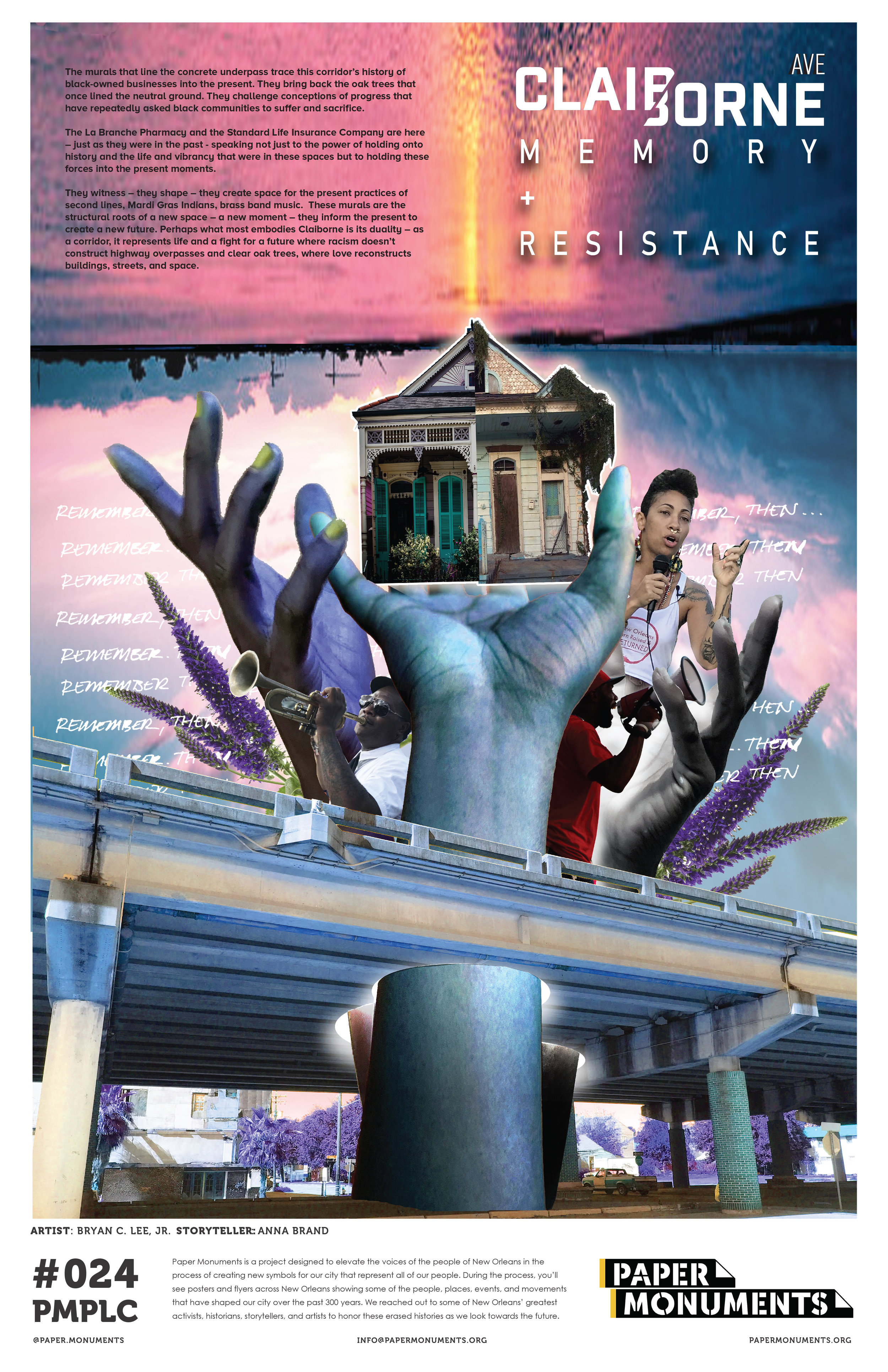Paper Monuments combines public education and collaborative design to expand our collective understanding of New Orleans.
Claiborne Avenue
Artist: Bryan C. Lee, Jr.
Storyteller: Anna Brand
Claiborne Avenue, from Treme to the 7th Ward, is a corridor packed to the rafters with memory, resistance and a refusal to be assimilated, dominated and denigrated. It is rockin’ – from one side to the other - with a resounding sense of life and history but also with evidence of development that has disenfranchised black residents and black-property and business owners. Claiborne tells multiple stories – stories of displacement and condemnation, absence and presence, erasure and memory, the past and the present.
Claiborne folds time so that the past cannot be forgotten and so that folks who created life out of what was once a plantation still press upon the present saying there is another way forward, there is another possible future that does not exclude, does not degrade, does not devalue.
Claiborne reminds us of possibilities, it witnesses the past in order to call forward new trajectories – new life, new ways of loving the place of a stoop, the shade of an oak tree, the echo of a brass band.
The murals that line the concrete underpass trace this corridor’s history of black-owned businesses into the present. They bring back the oak trees that once lined the neutral ground. They challenge conceptions of progress that have repeatedly asked black communities to suffer and sacrifice.
The La Branche Pharmacy and the Standard Life Insurance Company are here – just as they were in the past - speaking not just to the power of holding onto history and the life and vibrancy that were in these spaces but to holding these forces into the present moments.
They witness – they shape – they create space for the present practices of second lines, Mardi Gras Indians, brass band music. These murals are the structural roots of a new space – a new moment – they inform the present to create a new future. Perhaps what most embodies Claiborne is its duality – as a corridor, it represents life and a fight for a future where racism doesn’t construct highway overpasses and clear oak trees, where love reconstructs buildings, streets, and space.


